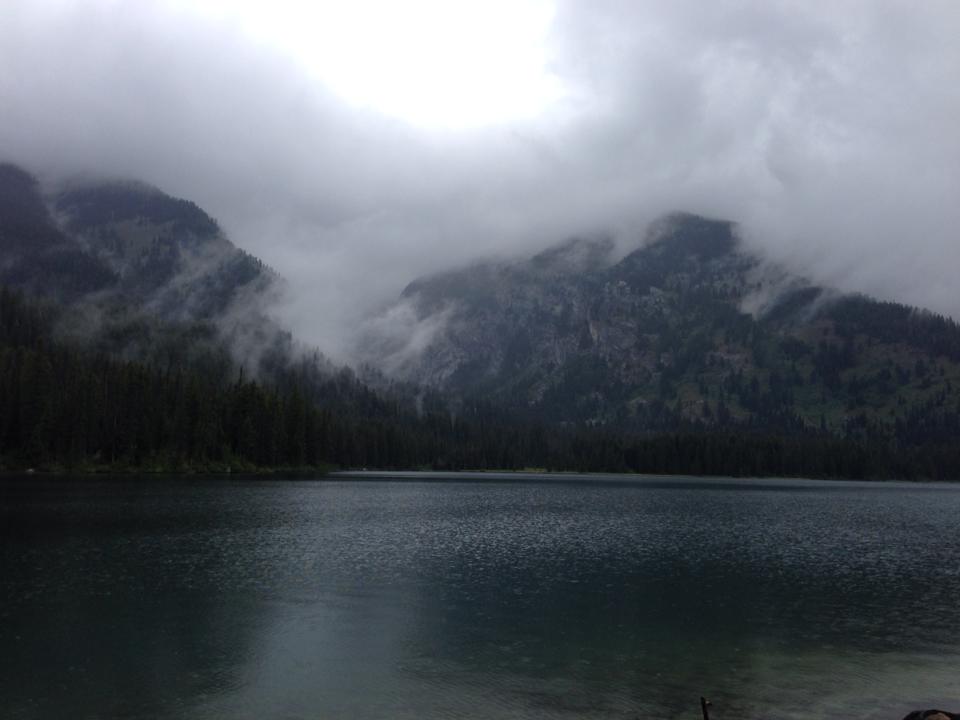 At the end of August, I drove 1000 miles to Grand Tetons National Park, a mountain range just south of Yellowstone. For two weeks I camped, hiked and animal watched through intermittently sunny and rainy weather.
At the end of August, I drove 1000 miles to Grand Tetons National Park, a mountain range just south of Yellowstone. For two weeks I camped, hiked and animal watched through intermittently sunny and rainy weather.
The second day, I went on a ranger-led hike to Taggart Lake. The ranger, a retired geologist from Texas, described two powerful geological forces that created the Grand Tetons’ dramatic granite peaks and pristine lakes.
If you hike near Jenny Lake, you’ll find a crack in the earth that makes up the Teton fault line. Millions of years ago, several earthquakes caused land on the west side of the fault line to shift upwards, exposing the young granite beneath. Today, the highest peak, Grand Teton, rises a dramatic 12,000 feet above the flat sagebrush valley below it.
Grand Tetons’ many canyons were carved by ice. During the Ice Age, glaciers covered the greater Yellowstone ecosystem, including the Grand Tetons. Massive and flowing, glaciers bulldozed rock and earth down the mountains, forming the shapes of the canyons. The displaced earth became the rocks and soil of the moraine, where Lodgepole pines and aspens now grow. Wildflowers like Indian Paintbrush and Lupine cluster in the canyons, most stunning in spring but still colorful in late summer.
We didn’t see any animals besides birds, but we saw signs of life. The ranger showed us a long mound of soil that was the cast of a pocket gopher’s tunnel, a remnant from the winter when the gopher tunnels and displaces dirt right under snowfall.
Hopping over mud puddles with our rain jackets zipped and hooded, we walked through a section of the forest where Lodgepole trees grew closely together and were all the same height. This was due to fire, the ranger explained. Around thirty-five years ago, lightning sparked a fire that burned the forest down. The clever Lodgepole pine, however, had a contingency plan. This pine releases special cones on the forest floor that only open when exposed to fire.
As we got closer to Taggart Lake, the ranger described a previous time he had led this hike. “One man was so overcome by the lake’s beauty,” he said, “that upon seeing the lake, he jumped straight in with his clothes on.”
Just over a mile in, Taggart Lake was painted in shades of gray and green. Low-hanging clouds shrouded the mountaintops. The surface of the lake was still besides raindrops that dotted patterns on its surface, distorting the reflection of the mountain and trees.